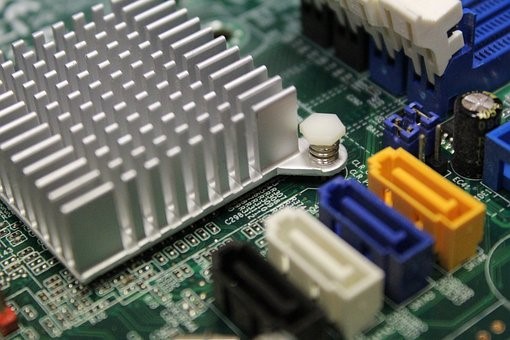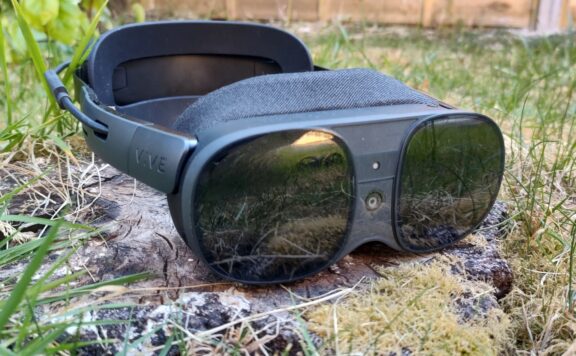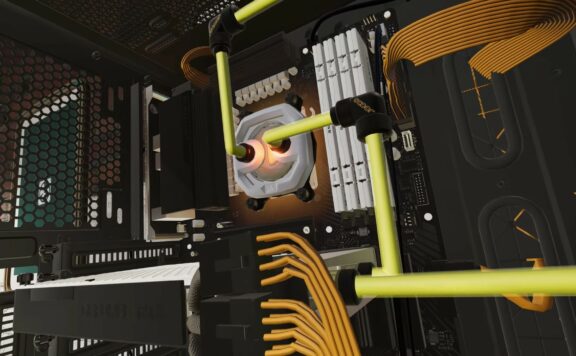The Ampligame A8 is an interesting entry in a market that’s seemingly overcrowded these days. Pre Zoom, desktop microphones were something of a niche. That’s far from the case now and in a saturated market, the Ampligame A8 Name aims to slide onto your desktop with all the important features of a mid-range mic, without any of the price considerations. Costing $46.99 US or local equivalent, this offering from Fifine is a USB condenser microphone with a cardoid pickup that comes crammed full of RGB.
Specifications
- Type – Condensor
- Pickup – Cardioid
- Connections – USB C / 3.5 mm Jack (monitor)
- Frequency response – 50Hz-20kHz
- Sensitivity – -40±3dB
Out The Box
Getting this microphone out onto the desk is a straightforward experience. As you’ll see form our unboxing, the colorful container holds the microphone capsule, the stand, cables, an arm attachment, and user guide, all wrapped up in an admirable amount of foam padding. While this could be better for all round recyclability, it’s going above and beyond for a budget bit of kit.
Initial impressions of the Ampligame A8 are, in a word, premium. The matte black mould that warps around the core of this peripheral is all about clean aesthetics and subtle branding. The shape is functional and doesn’t feel overly busy. There’s a practical simplicity that extends to the accompanying stand and makes the A8 seem slick. The attached fittings do lack the unique branding of other custom design, but instead maintain a consistent finish that belies the low price point of this kit. What seems like an out of box win does start to reveal compromises when it is picked up, however.
While the matched material and clean aesthetic make an unobtrusive and admittedly sleek addition to any desktop, this is a largely plastic design. That won’t be too much of a surprise with the SRRP, but if you’re looking for something more on the metallic side then this is a consideration. The core cylinder that comes perched in the included shock mount still feels solid and refuses to flex. The metallic grill gives it a solid heft, but the stand and remaining components don’t have quite the same presence as alternatives. The base is solid and the rubberised mat on the bottom will help dull sounds, but the articulating arm, mounting ring, and attachment mechanism feel flimsy and even fell apart during our unboxing. It’s not a deal breaker by any means, but you won’t want to be moving this around too much between streams. When plugged in, the A8 does, however, look alluring.

The RGB glow that softly pulses across the mic’s core is emblematic of other less affordable alternatives. This can be changed through a number of modes, from pulsing rainbows to solid colors at a click of the front facing button, or turned off altogether. The capacitive mute button is a nice little flair that comes perched on the top of this accessory, and the addition of a pop filter is a thoughtful add on. You’ll also find a 3.5mm monitor jack, allowing owners to listen to their own dulcet tones in real time, and the USBC port appropriately mounted to the base of this mic. The position of the gain control does not feel quite as natural. It sits in an undeniably awkward position at the back of the mic. My big European digits had to fumble around between the shock mount and the base stand to move the dial, while there’s no obvious thought put into cable management. These drawbacks do mean that buying this microphone does require a few compromises.

We ran a frequency response test on the Ampligame A8 and while I’m hardly going to have a studio quality setup here, the resulting response curve was quite reasonable for microphone that comes in at less than $50. While it might over ambitious to expect great high end responses from a budget offering and the bass tilted skew is not unexpected, the Ampligame A8 still held up reasonably well, especially when compared to more expensive offerings. Sure, saying the microphone can operate at 50Hz is probably being overly generous, but for human speech, you can expect clear, concise, and effortless communication in the middle of a Molten Core meltdown.
While this audio accessory does a respectable job in our initial test, things vary when we get gaming. As I noted, the Ampligame A8 does a consistently admirable job of making itself heard with no dropout or distortion, making it a solid contender for your desktop space. It does, however, have a few hurdles it needs help with. Despite performing well, this is a USB powered condenser style mic. As such, background noise is an inherent issue. There’s little denying that aircon, keyboard, and other extraneous intrusions will but in if you’re in a busy environment. Additionally, the warmth of a dynamic mic is just hard to replicate, even up close. The Ampligame A8 is so neutral it can sound hollow at the edges too. That said, this is less an issue with the A8, and more of a compromise you’ll need to make when deciding which microphone to buy. You can check out the samples in each instance below.
Simply put, the Fifine Ampligame A8 is a solid contender for your desktop space. It does a great job when sat back almost anywhere on your desk and doesn’t demand access to your personal space quite the same way that almost any dynamic microphone option will. If you’re looking for a mic that doesn’t mind being on display and will always make you heard then this is worth your time and a little bit of cash. If you’ve just started streaming and want to be heard before you blow a ton on dedicated streaming kit then do consider the Ampligame A8. It might not have all the options as a Yeti or the software support of other offerings, but it also comes in at a lower price point leaving more room to splurge on frames and ray tracing You can find out more on the official website. The A8 is available now via the Fifine site or online retailers like Amazon for $46.99 US or local equivalent.







